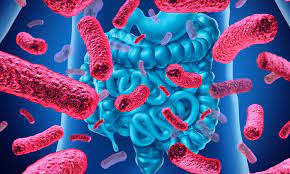Signs of Bacterial Infection: Burns, Cuts, and in the Body.
A bacterial infection occurs when bacteria enter your body and begin to multiply. Not all bacteria are bad. In fact, various species of bacteria begin to colonize our bodies shortly after we’re born. These bacteria are harmless and can offer us benefits sometimes, like helping with digestion.
Some types of bacteria, referred to as pathogenic bacteria, are harmful to us. When they infect us, they can cause disease.Some of these infections can become serious, so be sure to see your doctor if you think you have a bacterial infection. For example, a minor skin infection may develop into cellulitis if left untreated.
Additionally, some infections can lead to a life-threatening condition called sepsis. It’s an extreme response by your body to an infection.Below, we’ll explore some of the signs and symptoms of a bacterial infection in cuts, burns, and within the body.
Signs of infectionSigns and symptoms of a bacterial infection may vary depending on the location of the infection and the type of bacteria that’s causing it. However, some general symptoms of a bacterial infection include:
fever feeling tired or fatigued swollen lymph nodes in the neck, armpits, or groin headache nausea or vomitingCuts Your skin is your body’s first defense against infection. Breaks in the skin, like cuts, scrapes, or surgical incisions, can provide an entryway into the body for bacteria.
Symptoms of an infected cut or wound can include:
redness in the area of the wound, particularly if it spreads or forms a red streak swelling or warmth in the affected area pain or tenderness at or around the site of the wound pus forming around or oozing from the wound fever swollen lymph nodes in the neck, armpits, or groin delayed wound healing BurnsBurns happen when the tissues of your body are exposed to things like heat, radiation, or chemicals. Burns can vary in severity, from only affecting the top layer of skin to reaching layers of tissue deep beneath the skin.
People with burns are at risk for developing complications, such as a bacterial infection. Symptoms that a burn has become infected include:an increase in pain or discomfort around the affected area redness in the area of the burn, especially if it begins to spread or form a red streak swelling or warmth in the affected area fluid or pus oozing from the burn site a bad smell around the burn If your burn causes a blister to form, that area is at risk of becoming infected if the blister bursts.
In the body Bacteria can cause a variety of other infections in your body.Below is just a small sampling of infections you may already be familiar with. As you can see, the symptoms for these infections vary by the type of bacteria causing the infection and the part of your body that’s affected.
Strep throat Strep throat is an infection of the throat caused by a type of bacteria called group A Streptococcus. Symptoms include:sore throat difficulty swallowing red or white patches on the back of the throat headache loss of appetite
Urinary tract infection Urinary tract infections (UTIs) occur when bacteria from your rectum or skin enter your urinary tract. UTI symptoms can include:a burning sensation when urinating having to urinate frequently cloudy urine abdominal cramps fever
Pneumonia Pneumonia is an infection that inflames the air sacs in your lungs. Bacteria such as Streptococcus pneumoniae can cause it. Symptoms of pneumonia include:cough pain in your chest fever sweating or chills shortness of breath feeling tired or fatigued
Food poisoning Food poisoning can happen when you consume food or water that’s been contaminated with bacteria. Some types of bacteria that cause food poisoning include Escherichia coli, Listeria, and Salmonella. Symptoms can include:nausea or vomiting diarrhea abdominal cramps fever
Bacterial meningitis Meningitis is inflammation of the tissues that surround the brain and spinal cord. Bacterial meningitis can develop from several types of bacteria, including Streptococcus pneumoniae and Neisseria meningitidis. Symptoms include:headache stiff neck fever nausea or vomiting confusion sensitivity to light
Sepsis An untreated bacterial infection can also put you at risk for developing a life-threatening condition called sepsis. Sepsis occurs when an infection causes an extreme reaction in your body. The bacteria most likelyTrusted Source to cause sepsis include Staphylococcus aureus, E. coli, and some types of Streptococcus.Sepsis is always a medical emergency. Seek immediate medical attention if you experience any of the following:
shortness of breath fast heart rate fever being in severe pain or discomfort chills or sweating



Comments
Post a Comment